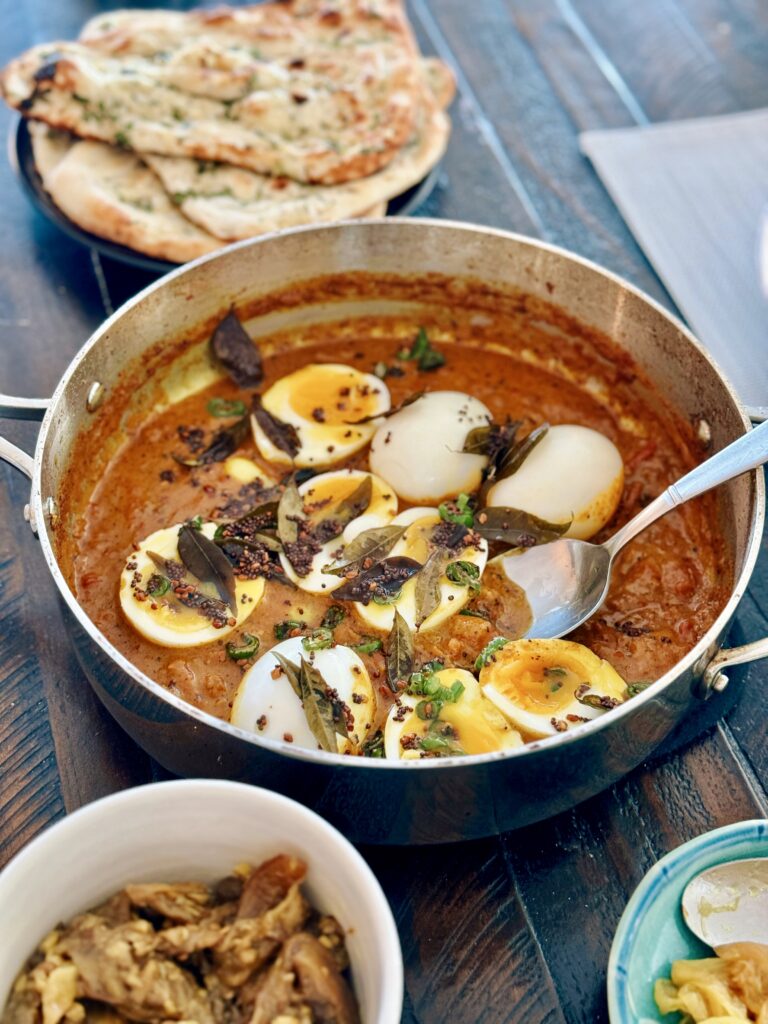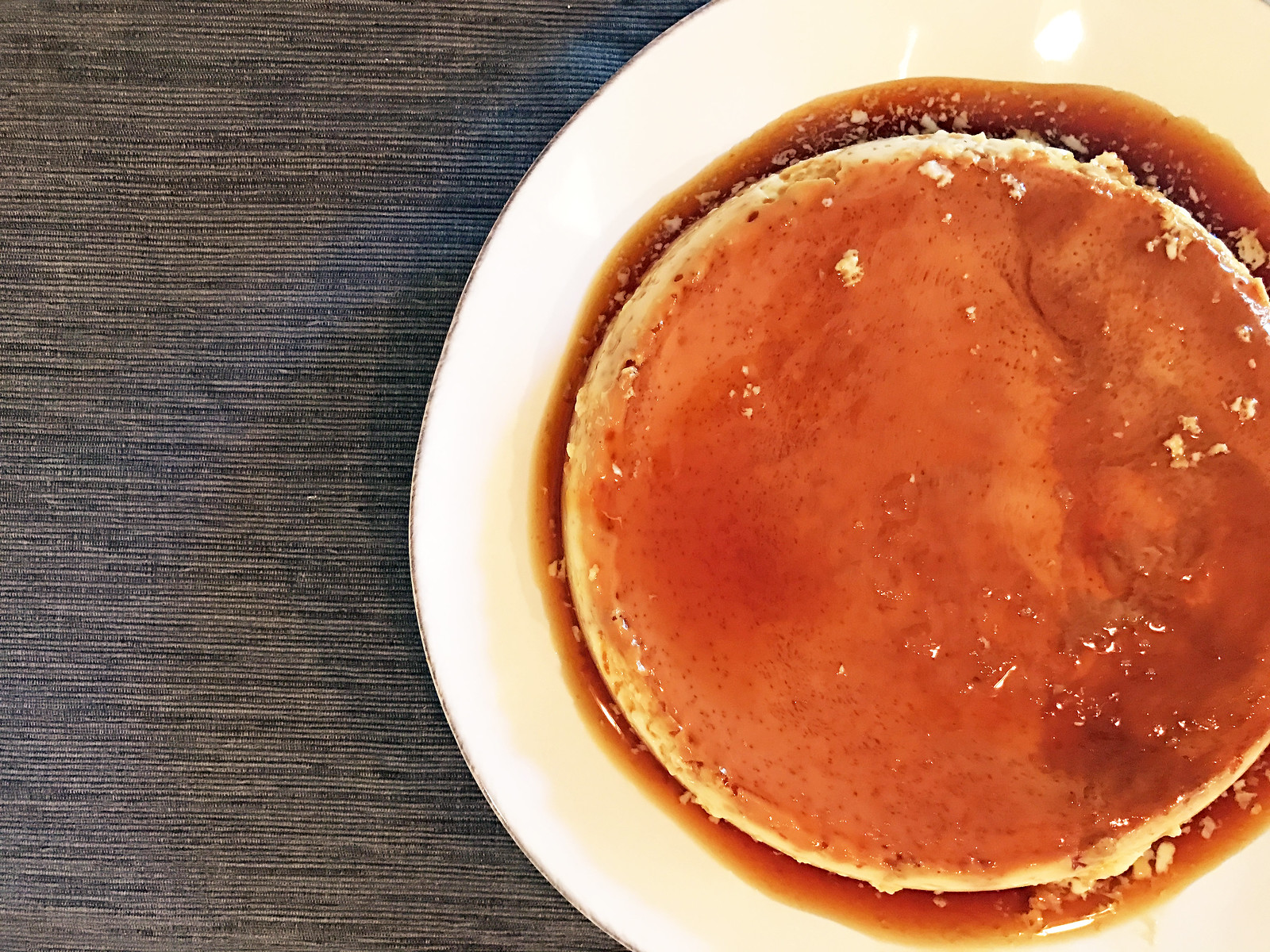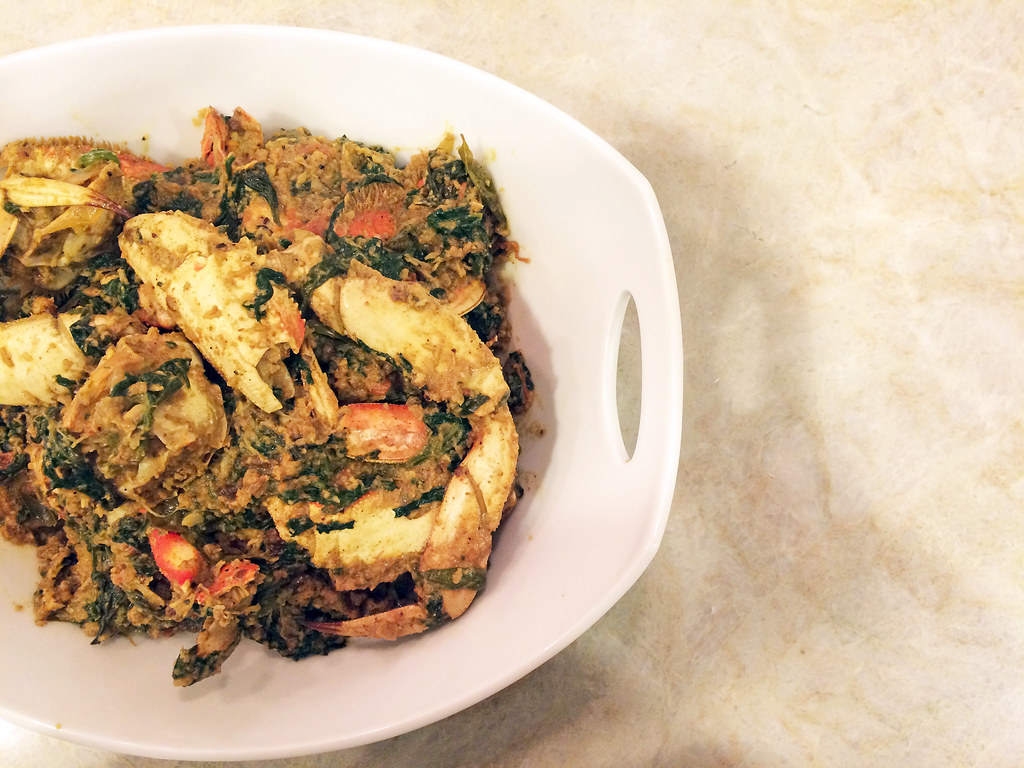This mildly spiced egg curry is perfect at any meal with some flatbread, be it roti, naan, or even buttered sourdough. Top off your toasted bread and jammy eggs with a dollop of seeni sambol, and you’ve got the perfect bite.

For the eggs:
- 6 large ggs
- 2 teaspoons coconut oil
- 1/2 red onion, peeled and thinly sliced
- 2 garlic cloves, peeled and sliced
- 2 tomatoes, diced
- 1 4-inch piece pandan leaf (optional)
- 1/2 cup water
- 2 teaspoons Sri Lankan roasted curry powder
- 1/2 teaspoon ground turmeric
- 1/2 cup coconut milk
- 1 teaspoon salt, or to taste
For the temper:
- 1 tablespoon coconut oil
- 8 fresh curry leaves
- 1/2 teaspoon brown mustard seeds
- 1/2 teaspoon fenugreek seeds
- 1 green chili, sliced
- Soft boil your eggs: fill a medium saucepan with water bring to a boil over medium-high heat. Carefully lower the eggs into the water and cook for 6 1/2 minutes, maintaining a gentle boil. Get a bowl filled with ice water ready, and when the eggs are cooked, transfer the eggs with a slotted spoon to the bowl of ice water. Once the eggs have cooled, peel the eggs and set aside.
- Make the curry: Heat the oil over medium-high heat in a medium frying pan and add the onions. Fry for 4 minutes, until the onions become translucent. Add the garlic, tomatoes, and pandan leaf, if using. Cook, stirring, for 2-3 minutes, until the onion begins to brown, then add the water, curry powder, and turmeric. Mix and cook for 2-3 minutes, then stir in the coconut milk and bring to a simmer. Simmer for about 7 minutes, stirring constantly, until slightly thickened and glossy. Season with salt and remove from heat.
- Make the temper: Heat the oil in a small frying pan over medium-high heat. Add the curry leaves, mustard seeds, fenugreek seeds, and green chili. Fry for 1-2 minutes until everything is fragrant. Remove from heat.
- Before serving, gently reheat the curry and add the eggs, stirring carefully to coat them in the curry for about 2 minutes. Pour the temper on top of the curry and serve.




